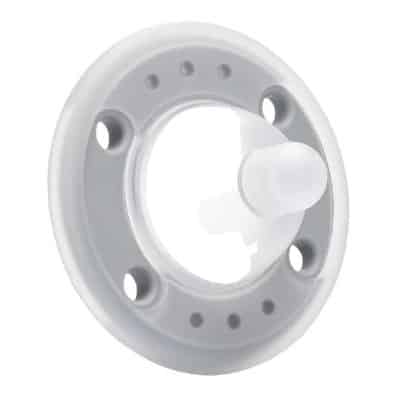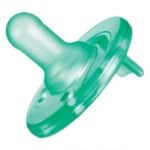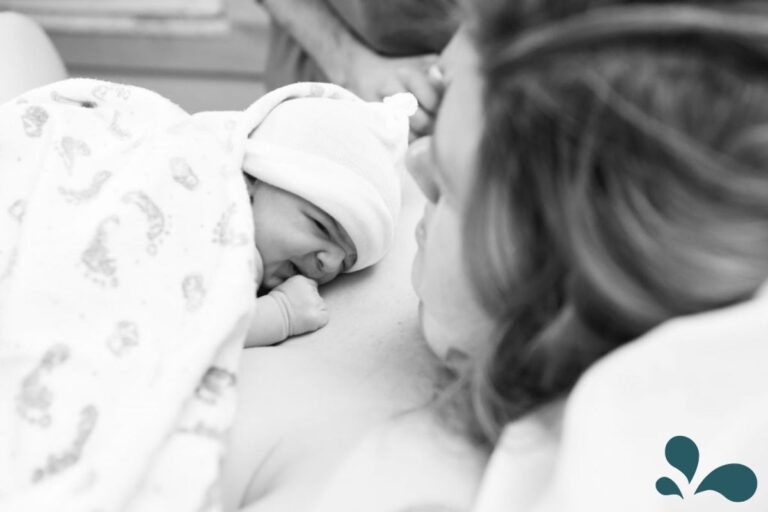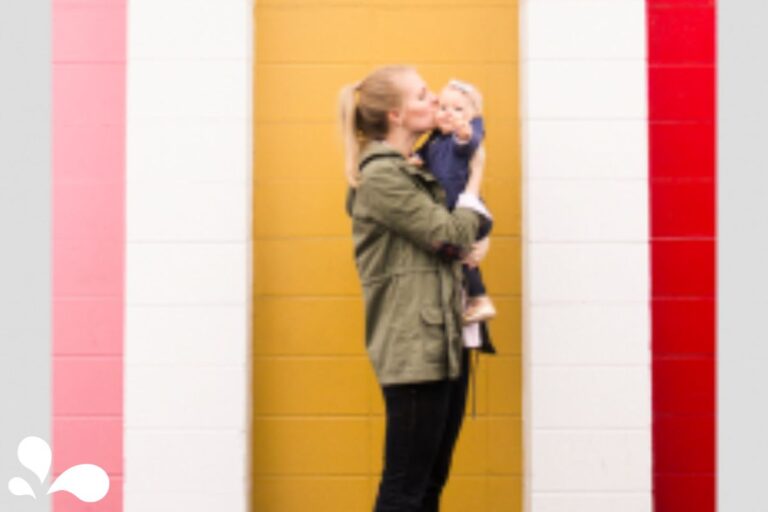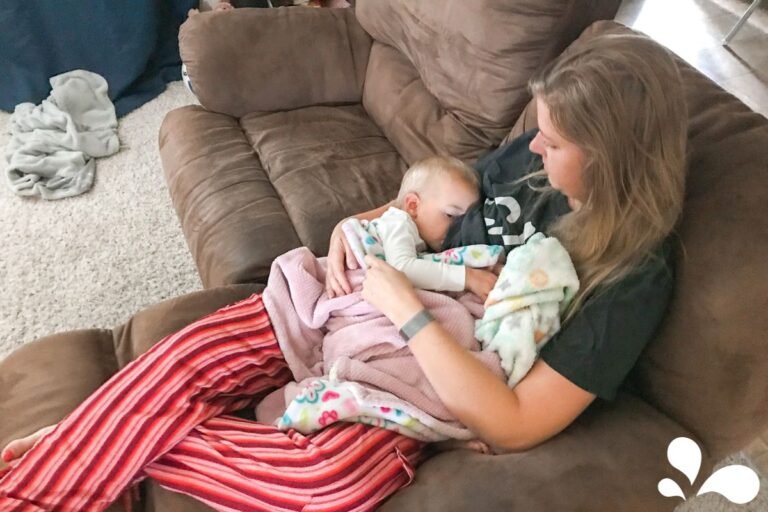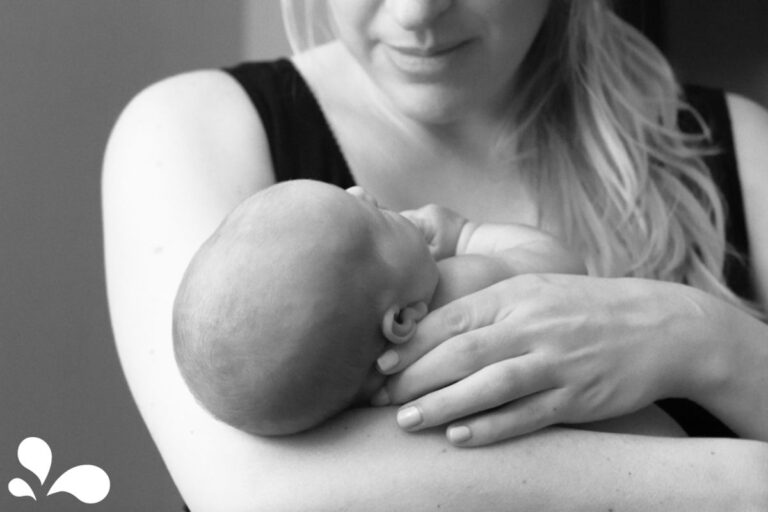You’re sitting at your laptop, creating your baby registry. You scroll and see a suggestion to add pacifiers. You know you want to breastfeed, but what are the recommendations for giving a breastfed baby a pacifier? Should pacifiers be avoided?
- When should I introduce a pacifier
- What should I consider before giving my baby a pacifier?
- What are the beneficial uses of pacifiers?
- When should we avoid the pacifier?
- Overall, does pacifier use affect breastfeeding?
- Tips for using a pacifier when breastfeeding
- Best Pacifier for Breastfed Babies
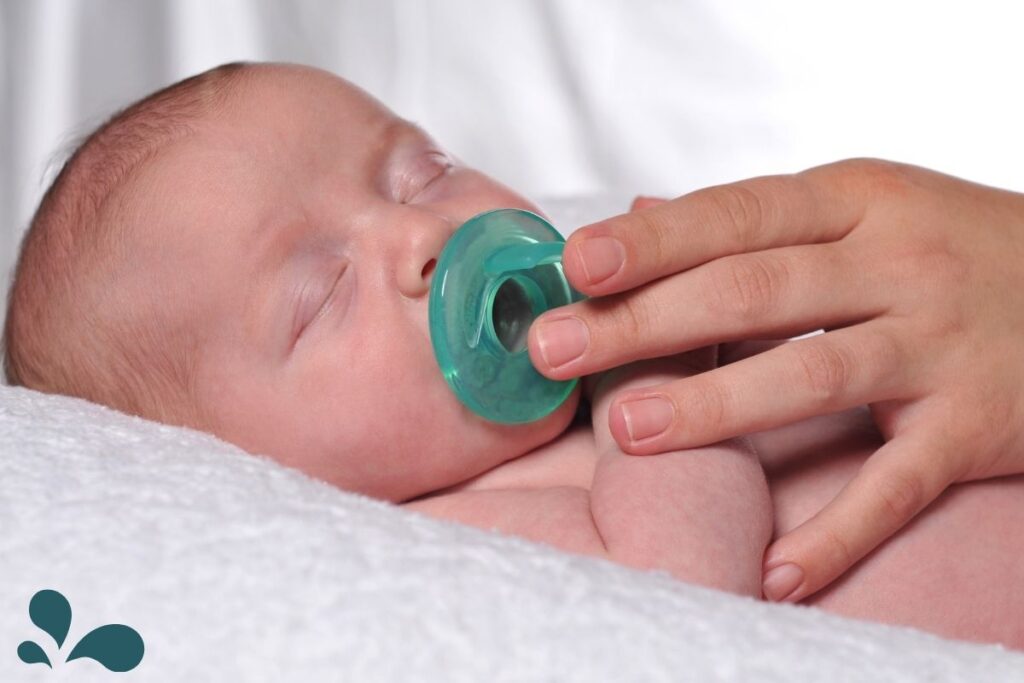
Here is what you need to know: pacifiers are great tools in certain situations.
When should I introduce a pacifier?
Though most hospitals give you and your baby a pacifier in the hospital, it is recommended to wait until breastfeeding and breastmilk supply has been established – which should happen around 3-6 weeks postpartum.
By waiting, you avoid nipple confusion or preference and ensure that your breasts receive the necessary stimulation to encourage your body’s milk production.
Does this mean you can’t introduce it sooner than three weeks? No. However, waiting until you know breastfeeding is going well is best.
What should I consider before giving my baby a pacifier?
Here are a few things to consider before giving your baby a pacifier and making it a regular part of their soothing practices:
Don’t substitute/delay a feeding by using the pacifier.
Your baby needs the nutrients breastfeeding provides, and it’s best to feed on-demand. On-demand feeding helps baby grow and your body establish a good milk supply.
Pacifier use can increase the risk of ear infections.
The consistent sucking causes the auditory tubes in the ears to be abnormally open, which allows fluids to flow from the throat to the ear.
Pacifiers can cause babies to wean from the breast early.
As babies transition to solids and breastfeed less often, there is still a need to suck, which can be met with a pacifier or breastfeeding. Less sucking at the breast typically equates to less milk and less of a reason for baby to continue the behavior.
Pacifiers can cause mom to start ovulating sooner.
Similarly, less breastfeeding due to a pacifier means it’s more likely for a mother to ovulate sooner, as the mother’s body doesn’t receive that hormonal cue as often.
Extended pacifier use can cause tooth misalignment.
This is a reason that most parents hear at pediatrician and dental appointments. Tooth misalignment can impact eating, speech, orthodontic health, etc. Weaning from a pacifier between 6-12 months old is recommended.
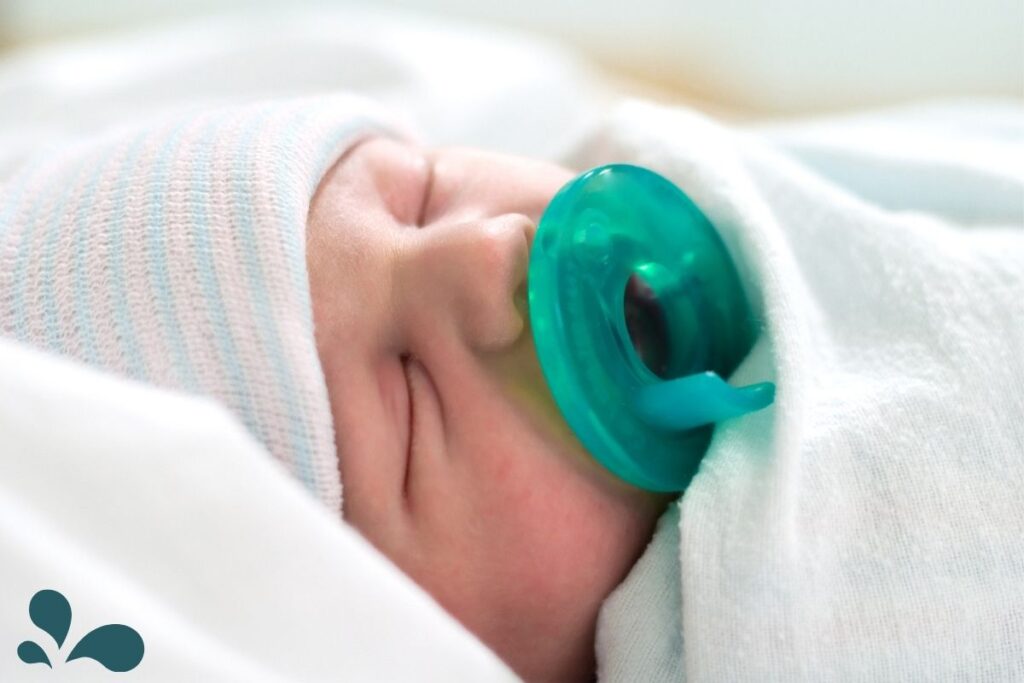
What are the beneficial uses of pacifiers?
- If baby is in NICU, a pacifier can be helpful with tube feeding as it encourages swallowing.
- When pacifiers are used for suck training, they can improve oral motor function.
- Pacifiers can soothe baby during a procedure.
- Pacifiers reduce the risk of SIDS.
- Pacifiers can help with sleep as they soothe baby to sleep and help keep baby asleep when baby slightly wakes.
- Similarly, pacifiers help calm baby in the car.
When should we avoid the pacifier?
If you notice any of the following, then avoid pacifier use:
- Decreased frequency of feedings
- Difficulty breastfeeding
- Breast refusal
- Problems with baby’s weight gain
- Sore nipples for mom
- Milk supply issues
- Repeated ear infections in baby
- Thrush/yeast for mom or baby
Further, these issues also indicate a need for professional assistance if any problems persist.
The American Academy of Pediatrics (AAP) states for pacifier use:
“Given the documentation that early use of pacifiers may be associated with less successful breastfeeding, pacifier use in the neonatal period should be limited to specific medical situations. These include uses for pain relief, as a calming agent, or as part of a structured program for enhancing oral motor function. Because pacifier use has been associated with a reduction in SIDS incidence, mothers of healthy term infants should be instructed to use pacifiers at infant nap or sleep time after breastfeeding is well established, at approximately 3 to 4 weeks of age.”
Overall, does pacifier use affect breastfeeding?
Unfortunately, pacifier usage can impact breastfeeding for several reasons:
- It can alter how your baby shows hunger cues.
- It might influence how your baby latches to the breast.
- It may affect breastmilk supply.
Tips for using a pacifier when breastfeeding
If you decide that using a pacifier is right for you and your baby, there are a few tips that you can implement to minimally impact breastfeeding.
- Rule out hunger before giving your baby a pacifier
- Do not give a pacifier to delay breastfeeding
- Avoid pacifiers with a bulb or lipstick shape
- Use a pacifier with a straight nipple and a wider base
- Once you find a pacifier that your baby likes, buy several of them
- Wean off pacifiers around baby’s first birthday (start around six months)
- In the first six months, clean the pacifier regularly
- Replace often and assess for breaks, cracks, or deterioration (especially once your baby has teeth)
- Do not clip a pacifier clip near your baby’s neck
- Use an appropriate pacifier size for your baby’s age
Best Pacifier for Breastfed Babies
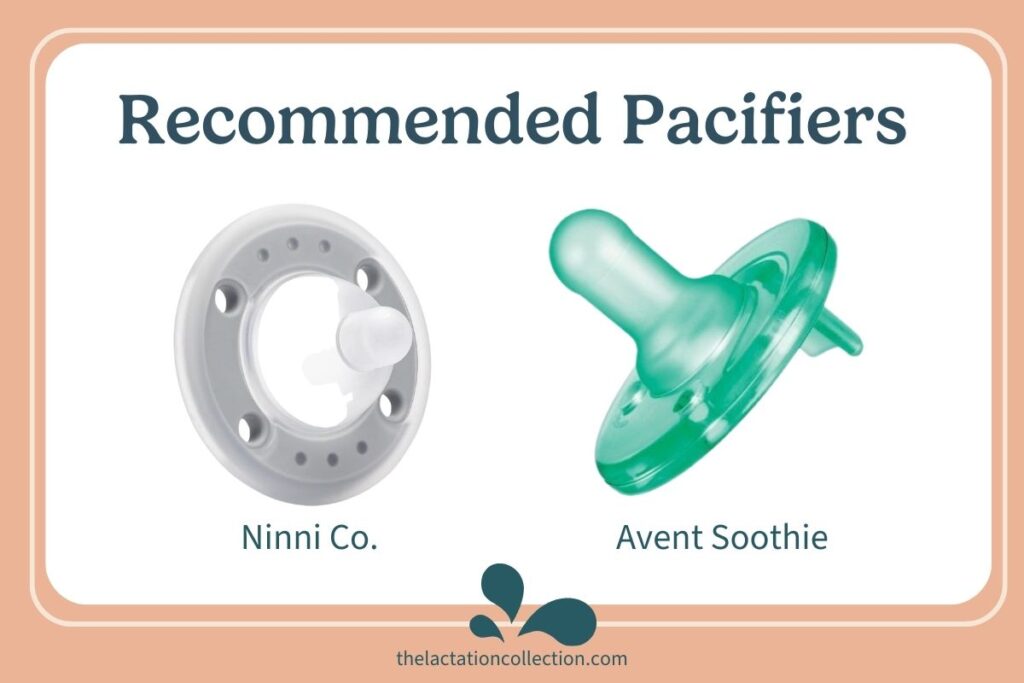
Ninni Co. Pacifier
(use code TLCMAMA for 10% off your purchase)
- Best mimics the breast
- Straight nipple with a very wide, soft base to help baby get a deep latch
- Used by infant oral physical therapists and IBCLCs to help babies with suck training
- Made of hospital-grade silicone
- Dishwasher safe
Avent Soothie (0-3 months)
(when needed, size up to the 3-18 month size)
- Very inexpensive
- The most common pacifier used in hospitals in the US
- Straight nipple with a wide base
- One-piece construction
- Made of hospital-grade silicone
- Dishwasher safe
As you navigate pacifier usage in your routine with your baby, decide what works best for you and your family. There are various factors, and at the end of the day, you are the best person to make this choice. That said, we’re always here to assist you on your journey and are happy to answer any breastfeeding (or pacifier-related) questions. Schedule an in-person consult with one of our IBCLCs today.
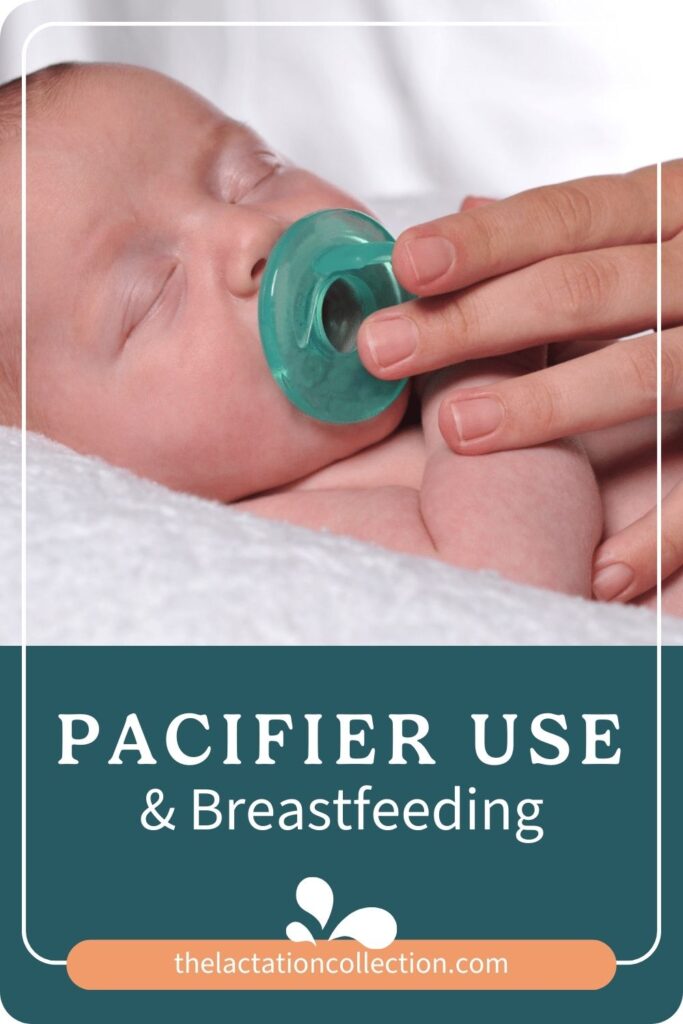
Products in this post
Read the full reviews our team created for the products you found:


